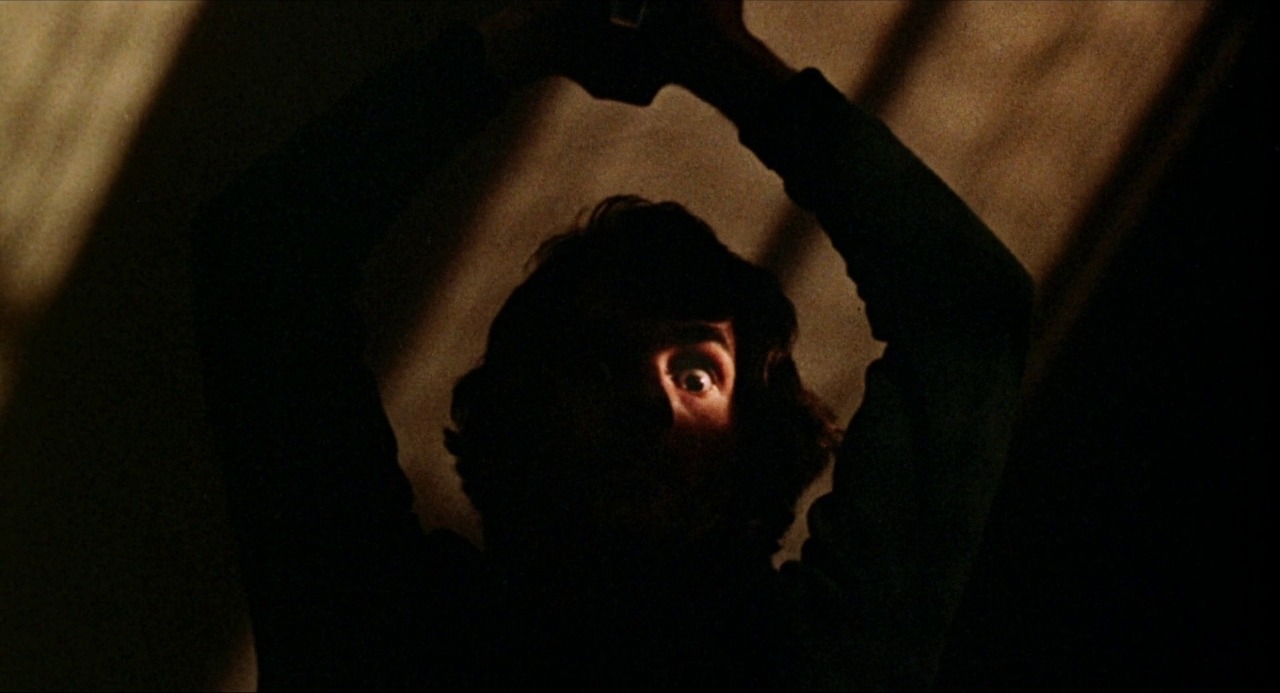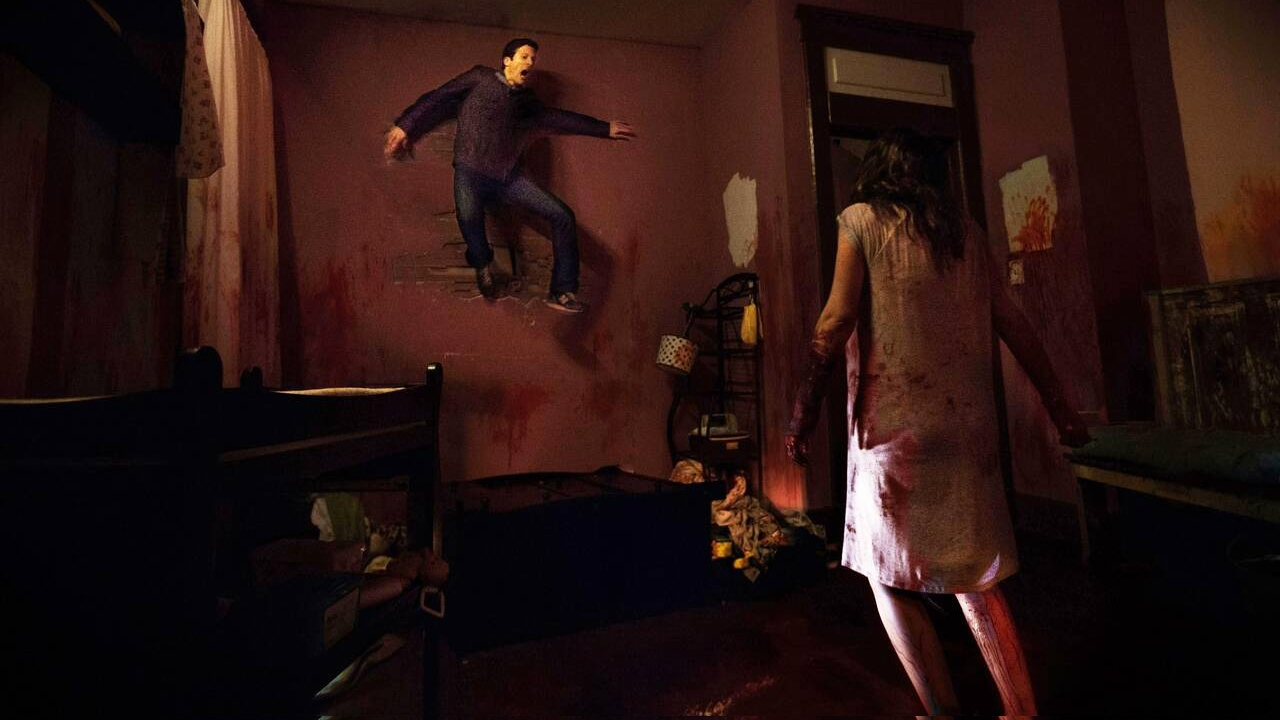Editorials
‘Black Christmas’ Remains the Pinnacle of Holiday Horror Classics [12 Days of Creepmas]

Merry Creepmas, you filthy animals. The final day of Bloody Disgusting’s 12 Days of Creepmas is here, and it feels only fitting to celebrate with the reigning champion of holiday horror: Bob Clark’s Black Christmas.
In case you missed any of the holiday festivities, you can keep track of the 12 Days of Creepmas here.
Released in 1974, Black Christmas has a simple setup on paper; over Christmas break, the residents of a sorority house are stalked and preyed upon by an unseen foe. Thanks to director Bob Clark and screenwriter Roy Moore, the plot isn’t quite so simple as it sounds thanks to a wonderfully complex cast of characters and character-driven moments that enhance the horror.
Scene-stealer Barb (Margot Kidder) is foul-mouthed and unapologetic, and her pranks or drunken quips ensure this sorority house is full of life. Barb is the precise type of handful that likely wears on housemother Mrs. MacHenry (Marian Waldman), who has hidden bottles of booze in the strangest of places throughout the house. Phyl (Andrea Martin), in many ways, acts as the true housemother as she looks after her fellow sisters. We never get to know Clare (Lynne Griffin), except for how much she’s loved by her boyfriend, family, and sorority sisters before she becomes the killer’s first victim in a memorable death sequence. At the center of it all is final girl Jess Bradford (Olivia Hussey), who has a lot more on her mind than the holidays.

Jess is at a critical turning point in her relationship with short-tempered music student Peter (Keir Dullea); he thinks they’ll get married and she’ll support his dreams, while she has goals and plans for her future. They don’t include a baby, much to Peter’s chagrin. That sets Peter up as a prime suspect in Clark’s atmospheric slasher that plays by its own set of rules. But it also sets Jess apart from the final girls that would follow, starting with Halloween‘s Laurie Strode. Jess may be venturing into controversial waters with her steadfast decision to abort her baby, but Moore smartly dedicates time to demonstrate just how kind Jess is when it comes to being there for her friends.
Through this sorority house and its devoted friendships and the warm holiday feels, Black Christmas stretches out its taut suspense. From the opening moments, we watch through the killer’s POV as he climbs the trellis and sets up camp in the Pi Kappa Sigma attic. Yet, for most of the runtime, the residents of the sorority house remain oblivious until it’s far too late. One by one, the unseen stalker bides his time, waiting for the perfect opportunity to strike. The unsettling realization that the holidays offer the perfect cover for murder permeates. No one bats an eye at the sisters who go missing; they surely must’ve gone home for Christmas, right?
Billy may be an opportunistic killer here, but he wants his acts known to his future targets. He torments the women with disturbing phone calls, filled with heavy breathing and skin-crawling obscenities that feel all the more offensive because they arrive at one of the holiest times of the year. Because we get attached to these characters, their demises are all the more tragic and horrific.

As if that wasn’t enough to solidify Black Christmas‘ place in holiday horror and slasher canon, Clark and Moore demonstrate profound awareness that random acts of violence are often far more unsettling and nightmare inducing than clean motives and tidy killer reveals.
Almost a decade later, Bob Clark would once again nail the holiday movie with the effortlessly charming A Christmas Story, earning him a worthy reputation for crafting holiday masterpieces. But Clark had impressive horror efforts under his belt before Black Christmas; the comedic Children Shouldn’t Play with Dead Things and brooding Monkey’s Paw tale Deathdream. The latter feels like a perfect precursor to Black Christmas, especially when combined with Clark’s executive producer work on sleazy Ed Gein-inspired psychological horror movie Deranged, co-directed and written by frequent Clark collaborator Alan Ormsby (Deathdream, Children Shouldn’t Play with Dead Things).
Black Christmas influenced and shaped the horror genre- and slashers specifically- in profound ways. It embraces its holiday theming so fully in ways that many holiday horror doesn’t quite. But it’s that perfect marriage of sleazy slasher thrills with authentic characters attempting to navigate the stresses of the holiday season, and life, that makes Black Christmas the pinnacle of holiday horror.
Luckily, you can stream this gem now on AMC+, Crackle, Fandor, Kanopy, Peacock, SCREAMBOX, Shudder, Tubi, and The Roku Channel.
Break out the crystal figurines, pour yourself a glass of spiked eggnog, and put watch the definitive holiday horror classic this Creepmas. And seasons bleedings for all.


Editorials
‘Devil’s Due’ – Revisiting the ‘Abigail’ Directors’ Found Footage Movie

Expectations can run high whenever a buzzworthy filmmaker makes the leap from indie to mainstream. And Radio Silence — Matt Bettinelli-Olpin, Tyler Gillett, Chad Villella and former member Justin Martinez — certainly had a lot to live up to after V/H/S. This production collective’s rousing contribution to the 2012 anthology film not only impressed audiences and critics, the same segment also caught the attention of 20th Century. This led to the studio recruiting the rising talent for a hush-hush found-footage project later titled Devil’s Due.
However, as soon as Radio Silence’s anticipated first film was released into the wild, the reactions were mostly negative. Devil’s Due was dismissed as a Rosemary’s Baby rehash but dressed in different clothes; almost all initial reviews were sure to make — as well as dwell on — that comparison. Of course, significant changes were made to Lindsay Devlin’s pre-existing script; directors Bettinelli-Olpin and Gillett offered up more energy and action than what was originally found in the source material, which they called a “creepy mood piece.” Nevertheless, too many folks focused on the surface similarities to the 1968 pregnancy-horror classic and ignored much of everything else.
Almost exactly two years before Devil’s Due hit theaters in January of 2014, The Devil Inside came out. The divisive POV technique was already in the early stages of disappearing from the big screen and William Brent Bell’s film essentially sped up the process. And although The Devil Inside was a massive hit at the box office, it ended up doing more harm than good for the entire found-footage genre. Perhaps worse for Radio Silence’s debut was the strange timing of Devil’s Due; the better-received Paranormal Activity: The Marked Ones was released earlier that same month. Despite only a superficial resemblance, the newer film might have come across as redundant and negligible to wary audiences.

Image: Allison Miller in Devil’s Due.
The trailers for Devil’s Due spelled everything out quite clearly: a couple unknowingly conceives a diabolical child, and before that momentous birth, the mother experiences horrifying symptoms. There is an unshakable sense of been-there-done-that to the film’s basic pitch, however, Bettinelli-Olpin and Gillett knew that from the beginning. To compensate for the lack of novelty, they focused on the execution. There was no point in hiding the obvious — in the original script, the revelation of a demonic pregnancy was delayed — and the film instead gives the game away early on. This proved to be a benefit, seeing as the directors could now play around with the characters’ unholy situation sooner and without being tied down by the act of surprise.
At the time, it made sense for Radio Silence’s first long feature to be shot in the same style that got them noticed in the first place, even if this kind of story does not require it. Still and all, the first-person slant makes Devil’s Due stand out. The urgency and terror of these expectant parents’ ordeal is more considerable now with a dose of verisimilitude in the presentation. The faux realism makes the wilder events of the film — namely those times the evil fetus fears its vessel is in danger — more effective as well. Obviously the set-pieces, such as Samantha pulling a Carrie White on three unlucky teens, are the work of movie magic, but these scenes hit harder after watching tedious but convincing stretches of ordinariness. Radio Silence found a solid balance between the normal and abnormal.
Another facet overlooked upon the film’s initial release was its performances. Booking legitimate actors is not always an option for found-footage auteurs, yet Devil’s Due was a big-studio production with resources. Putting trained actors in the roles of Samantha and Zach McCall, respectively Allison Miller and Zach Gilford, was desirable when needing the audience to care about these first-time parents. The leads managed to make their cursory characters both likable and vulnerable. Miller was particularly able to tap into Samantha’s distress and make it feel real, regardless of the supernatural origin. And with Gilford’s character stuck behind the camera for most of the time, the film often relied on Miller to deliver the story’s emotional element.

Image: Allison Miller in Devil’s Due.
Back then, Radio Silence went from making viral web clips to a full-length theatrical feature in a relatively short amount of time. The outcome very much reflected that tricky transition. Bettinelli-Olpin and Gillett indeed knew how to create these attention-grabbing scenes — mainly using practical effects — but they were still learning their way around a continuous narrative. The technical limitations of found footage hindered the story from time to time, such as this routine need to keep the camera on the main characters (or see things from their perspective) as opposed to cutting away to a subplot. There is also no explanation of who exactly compiled all this random footage into a film. Then again, that is an example of how the filmmakers strove for entertainment as opposed to maintaining every tradition of found footage. In the end, the directors drew from a place of comfort and familiarity as they, more or less, used 10/31/98 as the blueprint for Devil’s Due’s chaotic conclusion. That is not to say the film’s ending does not supply a satisfying jolt or two, but surely there were hopes for something different and atypical.
Like other big film studios at that time, 20th Century wanted a piece of the found-footage pie. What distinguished their endeavor from those of their peers, though, was the surprising hiring of Radio Silence. Needless to say, the gamble did not totally pay off, yet putting the right guys in charge was a bold decision. Radio Silence’s wings were not completely clipped here, and in spite of how things turned out, there are flashes of creativity in Bettinelli-Olpin and Gillett’s unconventional approach to such a conventional concept.
Radio Silence has since bounced back after a shaky start; they participated in another anthology, Southbound, before making another go at commercial horror. The second time, as everyone knows, was far more fruitful. In hindsight, Devil’s Due is regarded as a hiccup in this collective’s body of work, and it is usually brought up to help emphasize their newfound success. Even so, this early film of theirs is not all bad or deserving of its unmentionable status. With some distance between then and now, plus a forgiving attitude, Devil’s Due can be seen as a fun, if not flawed first exposure to the abilities of Radio Silence. And, hopefully, somewhere down the line they can revisit the found-footage format.

Image: Allison Miller and Zach Gilford in Devil’s Due.













You must be logged in to post a comment.